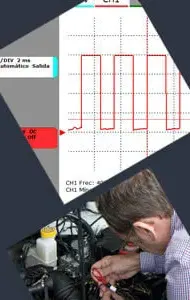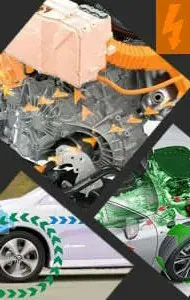Oscilloscope

Course Overview
For some decades, the electronic systems in a vehicle have been increasing in number and sophistication. There is also increasing interdependence between these systems through the multiplexing networks which allow communication between control units.
This means that the verification and diagnosis of these types of systems require special equipment for the measurement of their signals, and for this the oscilloscope is essential.
This course has been developed to provide car repair professionals with all the knowledge that they need to operate this type of equipment effectively.
The main objectives of this course are:
- To find out about the various types of oscilloscopes and their characteristics
- To be able to adjust the scale and range of the signals on the oscilloscope
- To interpret the oscillograms generated by different circuits
- To provide a diagnostic based on the information provided by this equipment
Course Topics
Introduction (20 minutes)
Introduction
Basic concepts
Test of knowledge
Types of oscilloscopes and technical characteristics (46 minutes)
Types of oscilloscopes
Leads and clamps
Technical characteristics of oscilloscopes
Test of knowledge
Display settings (44 minutes)
Main settings for displaying signals
Options menu on oscilloscopes
Using multiple channels
Test of knowledge
General checks with oscilloscope (35 minutes)
Testing an electrical circuit
Testing an active electrical circuit
Finding intermittent faults
Test of knowledge
Testing the starting and charging system (6 minutes)
Testing the starting and charging system
Verification of starter motor consumption
Testing the preheating systems (10 minutes)
Testing the preheating systems
Glow plug control
Testing the ignition systems (10 minutes)
Testing the ignition systems
Control of the piezoelectric knock sensor
Control of the ignition coil
Checks on sensors (19 minutes)
Checks on sensors
Verification of crankshaft and camshaft signals – Hall sensors –
Control of the accelerator pedal position sensor signal
Control of saturation and regeneration of the particulate filter – Pressure sensor –
Control of the zirconia dioxide oxygen sensor
Control of the wide-band oxygen sensor
Control of the inductive crankshaft sensor
Control of the piezo-electric absolute pressure sensor
Checks on actuators (16 minutes)
Checks on actuators
Regulation of the rail pressure in common rail systems
Boost pressure regulation
Regulation of the flow from the high-pressure pump (fuel flow control valve)
Verification of the injectors in a common rail system
Verification of electric control of injectors
Multiplexed network diagnosis (18 minutes)
Multiplexed network diagnosis
Pre-heating LIN bus
Examples of oscilloscope applications on different components and vehicles (65 minutes)
Audi A3 1.6 TDi (90 HP) Engine (8P1) (CAYB) (From 2003 to 2012)
Fiat 500L (2012-) 1.6D Multijet (105 HP) (199 B5.000)
Kia Sportage (SL) 1.7 CRDi (116 CV) (D4FD) (2010->)
Self-assessment (21 minutes)
Self-assessment
Average Duration
5 hours 10 minutes
Access This Course
Get access to this course and 30+ more topics by subscribing.
Subscribe to Access All Online Courses
We provide access to all of our online courses for 12 months with a one-time purchase.
£199 ex.VAT per year


